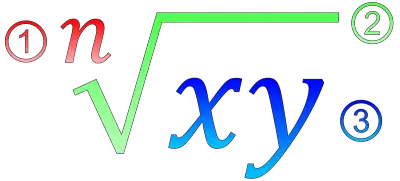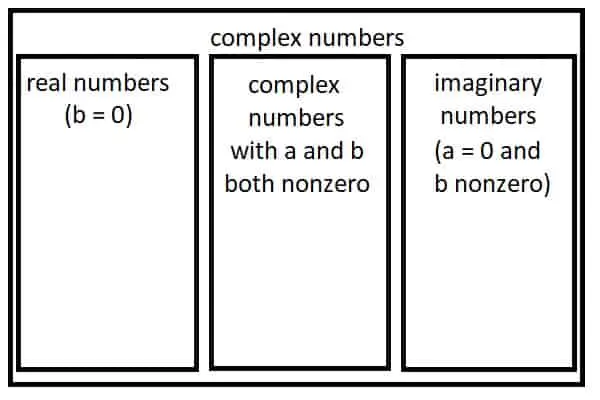Square roots are used in math from arithmetic to algebra to calculus and beyond. They are also used in various professions, from carpentry to engineering. However, this still leave some questions about square roots and their properties.
So, what do you need to know about square roots? Each nonzero number has 2 square roots. Each positive number has a negative square root. The square root of a negative number is imaginary. The square root of a complex number is complex. Some square roots are rationals or integers. We can add & multiply square roots, and this can simplify our work.
Of course, there are cases to pay attention to when looking at questions about square roots.
In this article, we’ll answer 8 common questions about square roots. Along the way, we’ll see how square roots are related to imaginary and complex numbers, and how we can combine them with addition or multiplication.
Let’s get started.
8 Common Questions About Square Roots
After you learn how to calculate square roots and what they mean, it is helpful to know the answers to some common questions that pop up.

A common one is about how many answers are possible when taking a square root, so we’ll begin there.
Do Square Roots Have Two Answers?
Square roots do have two answers: the principal square root and its negative. The only exception is the number zero, which only has one square root (which is zero, since 02 = 0).

If S is the principal square root of N, then N = S2. It must also be true that –S is a square root of N, since (-S)2 = (-S)(-S) = S2 (the product of two negatives is a positive).
Example 1: Square Roots of 4
There are two square roots of 4: +2 and -2.
The principal square root of 4 is +2. The other square root of 4 is -2 (the opposite or negative of +2).
Example 2: Square Roots of 7
There are two square roots of 7: √7 and -√7.
The principal square root of 7 is +√7. The other square root of 7 is –√7 (the opposite or negative of +√7).
Can Square Roots Be Negative?
The square root of a real number can be negative, as we saw in the examples above. In fact, for any positive real number, there is both a positive square root (the principal square root) and a negative square root.
For example, one of the square roots of 16 is -4, which is negative.
However, this still leaves the question of real numbers that are not positive.
The square root of zero is zero, which is neither positive nor negative.
The square root of a negative number is neither positive nor negative, and it requires the concept of imaginary numbers.
Do Negative Numbers Have Square Roots?
Negative numbers do have square roots. These are called imaginary numbers (you can learn more about them here).
The most basic imaginary number is the square root of -1, which is called I (which stands for “imaginary unit”). As an equation, we can write i = √-1 or i2 = -1.

For a negative number N, we can rewrite it as -|N|, or “the negative of the absolute value of N”. Then square root of N is:
- √N
- =√(-|N|) [N = -|N| since N is a negative number]
- =√((-1)(|N|)) [factor -|N| as -1 times |N|]
- =√(-1)√(|N|) [since √(ab) = √a√b]
- =i√(|N|) [since i = √-1]
Example: The Square Root Of -4
The square root of -4 is i√4 or 2i. We can show this by using i = √-1 to simplify the following:
- √-4
- =√((-1)(4)) [factor -4 as -1 times 4]
- =√(-1) √(4) [since √(ab) = √a√b]
- =i√(4) [since i = √-1]
- =i2 [since √(4) = 2]
- =2i
Do All Numbers Have Square Roots?
All numbers have square roots, including all real numbers, all imaginary numbers, and all complex numbers.

For imaginary and complex numbers, the square roots will be complex numbers. For every complex number except zero, there are two distinct square roots: the principal square root and its opposite (negative).
Example: The Square Root of 3 + 4i
The square root of 3 + 4i is 2 + i. We can prove this by using FOIL as follows:
- (2 + i)2
- =(2+i)(2+i)
- =4 + 2i + 2i + i2 [used FOIL]
- =4 + 4i + i2 [combined like terms, 2i + 2i = 4i]
- =4 + 4i – 1 [since i2 = -1]
- =3 + 4i [combined like terms, 4 – 1 = 3]
Of course, the negative of 2 + i is also a square root of 3 + 4i. So, the two square roots of 3 + 4i are 2 + i and -2 – i.
Can Square Roots Be Rational Numbers?
Square roots can be rational numbers in some cases. We need to take a few steps to determine this:
- First, look at the fraction under the radical (square root symbol).
- Next, reduce the fraction as much as possible (this will make later steps easier).
- Then, see if the numerator is a perfect square.
- Finally, see if the denominator is a perfect square.
If both the numerator and denominator are perfect squares, then the square root of the number is rational. Otherwise, it is not. (Important note: do not skip the step of simplifying first, or you will come to the wrong conclusion!)
Remember that a perfect square comes from an integer (whole number) squared. For example:
- 12 = 1
- 22 = 4
- 32 = 9
Let’s see some examples to make this concept clear.
Example 1: A Number Whose Square Root Is Rational
Let’s say we want to find out if √(16/36) is rational.
First, take the fraction under the radical: 16/36.
Next, reduce the fraction: 16/36 = 4(4)/4(9) = 4/9 (the 4 cancels, since it appears in both the numerator and denominator).
Then, see if the numerator is a perfect square: yes, since 4 = 22.
Finally, see if the denominator is a perfect square: yes, since 9 = 32.
Then the square root of 16/36 is a rational: its value is 2/3 (after reducing 4/6 as much as possible).
Example 2: A Number Whose Square Root is Irrational
Let’s say we want to find out if √(8/10) is rational.
First, take the fraction under the radical: 8/10.
Next, reduce the fraction: 8/10 = 2(4)/2(5) = 4/5 (the 2 cancels, since it appears in both the numerator and denominator).
Then, see if the numerator is a perfect square: yes, since 4 = 22.
Finally, see if the denominator is a perfect square: no, since 5 is not a perfect square (it is between the perfect squares 4 and 9).
Then the square root of 8/10 is irrational. Its value is 2/√5 (or 2√5/5 after rationalizing the denominator).
Can Square Roots Be Integers?
Square roots can be integers in some cases. If the number under the radical is a perfect square, then its square root is an integer.
Let’s see some examples to make this concept clear.
Example 1: A Number Whose Square Root Is An Integer
Let’s say we want to find out if √(81) is an integer.
We know that 81 is a perfect square, since it is equal to 92.
Then its square root is √81 = √(92) = 9, which is an integer.
Example 2: A Number Whose Square Root Is Not An Integer
Let’s say we want to find out if √(37) is an integer.
We know that 36 is a perfect square, since it is equal to 62.
We know that 49 is a perfect square, since it is equal to 72.
This tells us that the square root of 37 is not an integer, since 36 < 37 < 49. This also tells us that the square root of any other number between 36 and 49 is not an integer.
Can Square Roots Be Added?
Square roots can be added, and in some cases, we can combine them as like terms.
Example 1: Adding Square Roots That Are Like Terms
Let’s say we want to add 2√5 and 6√5. Since both terms have a √5, they are like terms.
We can add them just like we would add other like terms:
- 2 + 6 = 8
- 2x + 6x = 8x
- 2i + 6i = 8i
- 2√5 + 6√5 = 8√5
Example 2: Adding Square Roots That Are Like Terms After Simplifying
Let’s say we want to add 4√3 and 2√27. These are like terms, but we need to simplify a bit before we can see it:
We can rewrite √8 as follows:
- √27
- =√((9)(3)) [factor 27 as 9 times 3]
- =√9√3 [since √(ab) = √a√b]
- =3√3 [since √(9) = 3]
Now we see that we have a sum of like terms, and we can combine them:
- 4√3 + 2√27
- =4√3 + 2(3√3 ) [since √27 = 3√3]
- =4√3 + 6√3
- =10√3
Example 3: Adding Square Roots That Are Not Like Terms
Let’s say we want to add √2 and √3. Since 2 and 3 are prime numbers and share no common factors, we cannot simplify them or rewrite them in any way.
Thus, these two square roots can be added, but they are not like terms, so they cannot be combined. There is no simpler way to write √2 + √3, so we leave it as is.
Can Square Roots Be Multiplied?
Square roots can be multiplied. The basic rule is given by the formula:
- (√a)(√b) = √(ab)
This rule can help us to simplify products of square roots.
Example 1: Simplifying The Product Of Two Square Roots
Let’s say we want to multiply two square roots: √2 and √3.
To simplify their product, we can calculate:
- √2*√3
- =√(2*3) [since (√a)(√b) = √(ab)]
- =√6
Example 2: Simplifying The Product Of Two Square Roots
Let’s say we want to multiply two square roots: √2 and √2.
To simplify their product, we can calculate:
- √2*√2
- =√(2*2) [since (√a)(√b) = √(ab)]
- =√4
- =2
So, for a number N, we have the formula:
- √N*√N = N
Conclusion
Now you know a little more about square roots, along with the answers to some common questions about them.
You can learn how to add, multiply, and divide square roots here.
You can learn all about what square roots are used for in my article here.
You can learn how to do square roots by hand in my article here.
You can also learn how to graph square roots in my article here.
You can learn how to take the derivative of a square root function here.
I hope you found this article helpful. If so, please share it with someone who can use the information.
Don’t forget to subscribe to my YouTube channel & get updates on new math videos!
~Jonathon

